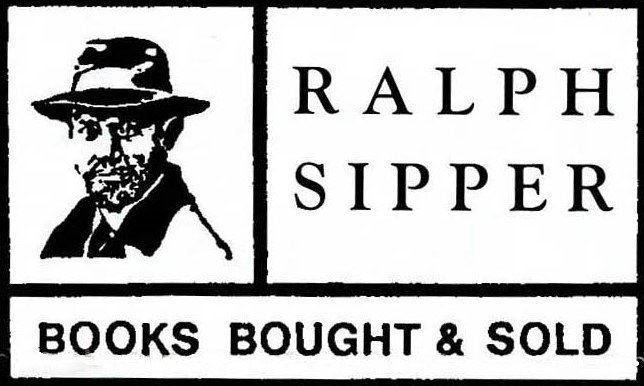Faulkner, William. FLYING THE MAIL
Culver City: Metro Goldwyn Mayer, June 3, 1932. Continuity treatment of an unproduced film written by Faulkner. 16 mimeographed pages on rectos only and in printed wrappers with studio label. Stamped Vault Copy with File Copy inked out on the front cover. Formerly part of the MGM archives, this formative fragment was abandoned when the studio was sold in 1986. The only surviving original text extant as thoroughly established by film scholar Bruce W. Kawin in “Faulkner’s MGM Screenplays” (University of Tennessee Press, 1982).
“Flying by Mail” originated as a series of articles for Cosmopolitan Magazine (March-June,1932) by airmail pilot Bogart Rogers, which was then adapted by Ralph Graves and Bernard Fineman for MGM. Faulkner was subsequently called upon to rewrite their efforts. Wallace Beery, Min Dressler, and Robert Montgomery were slated to enact the leading roles in what at heart was designed as popular movie entertainment. In the end the studio decided against making the film despite Faulkner’s undeniable authorial gifts in suggesting a submerged Oedipal relationship and for unearthing the hidden motivations of characters for novels to come like “The Sound and the Fury” and “Absalom, Absalom.” Fine. Housed in a custom-made cloth clamshell box. A little-known and obviously rare part of literary history once lost and here regained.
Culver City: Metro Goldwyn Mayer, June 3, 1932. Continuity treatment of an unproduced film written by Faulkner. 16 mimeographed pages on rectos only and in printed wrappers with studio label. Stamped Vault Copy with File Copy inked out on the front cover. Formerly part of the MGM archives, this formative fragment was abandoned when the studio was sold in 1986. The only surviving original text extant as thoroughly established by film scholar Bruce W. Kawin in “Faulkner’s MGM Screenplays” (University of Tennessee Press, 1982).
“Flying by Mail” originated as a series of articles for Cosmopolitan Magazine (March-June,1932) by airmail pilot Bogart Rogers, which was then adapted by Ralph Graves and Bernard Fineman for MGM. Faulkner was subsequently called upon to rewrite their efforts. Wallace Beery, Min Dressler, and Robert Montgomery were slated to enact the leading roles in what at heart was designed as popular movie entertainment. In the end the studio decided against making the film despite Faulkner’s undeniable authorial gifts in suggesting a submerged Oedipal relationship and for unearthing the hidden motivations of characters for novels to come like “The Sound and the Fury” and “Absalom, Absalom.” Fine. Housed in a custom-made cloth clamshell box. A little-known and obviously rare part of literary history once lost and here regained.
Culver City: Metro Goldwyn Mayer, June 3, 1932. Continuity treatment of an unproduced film written by Faulkner. 16 mimeographed pages on rectos only and in printed wrappers with studio label. Stamped Vault Copy with File Copy inked out on the front cover. Formerly part of the MGM archives, this formative fragment was abandoned when the studio was sold in 1986. The only surviving original text extant as thoroughly established by film scholar Bruce W. Kawin in “Faulkner’s MGM Screenplays” (University of Tennessee Press, 1982).
“Flying by Mail” originated as a series of articles for Cosmopolitan Magazine (March-June,1932) by airmail pilot Bogart Rogers, which was then adapted by Ralph Graves and Bernard Fineman for MGM. Faulkner was subsequently called upon to rewrite their efforts. Wallace Beery, Min Dressler, and Robert Montgomery were slated to enact the leading roles in what at heart was designed as popular movie entertainment. In the end the studio decided against making the film despite Faulkner’s undeniable authorial gifts in suggesting a submerged Oedipal relationship and for unearthing the hidden motivations of characters for novels to come like “The Sound and the Fury” and “Absalom, Absalom.” Fine. Housed in a custom-made cloth clamshell box. A little-known and obviously rare part of literary history once lost and here regained.
